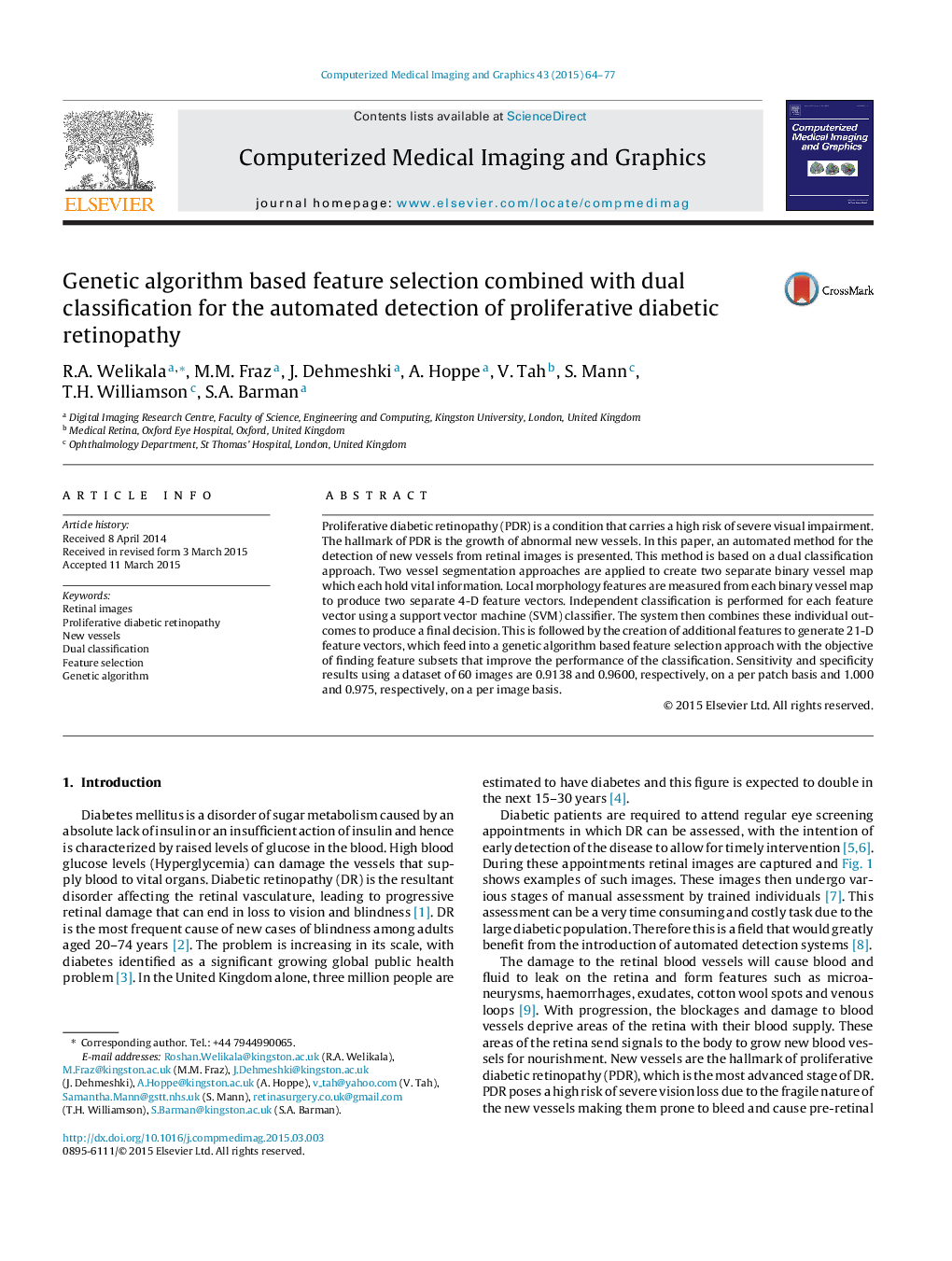| Article ID | Journal | Published Year | Pages | File Type |
|---|---|---|---|---|
| 503978 | Computerized Medical Imaging and Graphics | 2015 | 14 Pages |
•The detection of new vessels is modelled on a dual classification approach.•Morphology, intensity and gradient based features create a 21-D feature set.•A genetic algorithm is used for feature selection and SVM parameter selection.•Reduces false responses to bright lesions, dark lesions and reflection artefacts.
Proliferative diabetic retinopathy (PDR) is a condition that carries a high risk of severe visual impairment. The hallmark of PDR is the growth of abnormal new vessels. In this paper, an automated method for the detection of new vessels from retinal images is presented. This method is based on a dual classification approach. Two vessel segmentation approaches are applied to create two separate binary vessel map which each hold vital information. Local morphology features are measured from each binary vessel map to produce two separate 4-D feature vectors. Independent classification is performed for each feature vector using a support vector machine (SVM) classifier. The system then combines these individual outcomes to produce a final decision. This is followed by the creation of additional features to generate 21-D feature vectors, which feed into a genetic algorithm based feature selection approach with the objective of finding feature subsets that improve the performance of the classification. Sensitivity and specificity results using a dataset of 60 images are 0.9138 and 0.9600, respectively, on a per patch basis and 1.000 and 0.975, respectively, on a per image basis.
